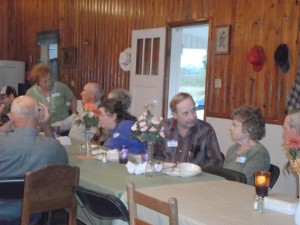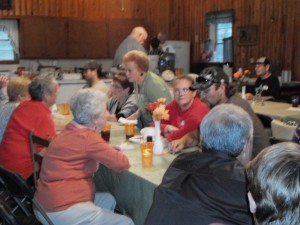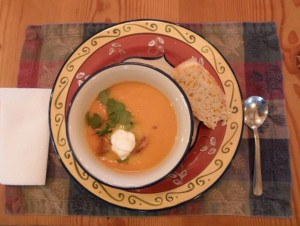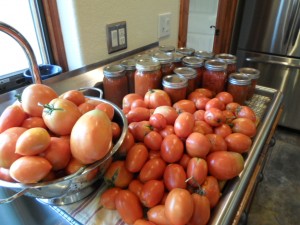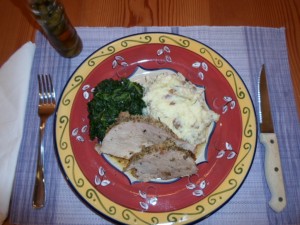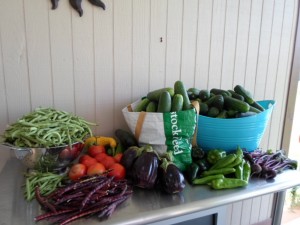Last Saturday evening, my husband and I attended the Bonanza community’s Meet Your Neighbor Stew. It was the first time that we had ever been in the Bonanza Community Center and it is indeed a treasure. The organizers arranged for several stews, homemade cornbread and wheat bread, pickles and other fixings. And the array of desserts was most impressive.
Our community is made up of individuals who have lived in the Bonanza area all their lives – even attending the school before Rains opened, individuals who had left, yet returned because of their love for the area and the relative newcomers like my husband and me who were seeking the peace of country living. I did not bring stew to the event – maybe next time – but I did make beef stew last week.
I usually look for a nice roast and cut it into 3⁄4- to 1-inch cubes. Dredge the cubed meat in flour seasoned with salt, pepper, garlic powder, onion powder, celery seeds and oregano. Clean and cut onions, carrots and celery into the same sized cubes as the meat. Also, mince 4 garlic cloves. I use two pots while making this stew, one that is wide to brown meat and sauté the vegetables and one that is tall enough to hold all the ingredients as I build the stew.
Heat vegetable oil in the wide pot and add the meat. Sizzle the meat until it is nicely browned on all sides. The flour will stick to the bottom of the pan, but don’t worry, just add about half a cup of good red wine to deglaze it – beef stock will also do the job. When most of the stuck-on bits have released, pour the contents into the tall pot.
Return the wide pot to the burner, add a little more oil and sauté all the vegetables over medium heat. As the vegetables cook, they’ll release liquid and finish deglazing the bottom of the pan. Those brown bits are important since they add a rich flavor to the stew. Pour the finished vegetables into the tall pot.
Cube potatoes and add them to the tall pot. Pour in enough beef stock to cover all the ingredients, along with a jar or can of tomato bits, and turn on the heat. Add seasonings. I always add bay leaves and usually add a small amount of crushed fennel seed, dill seed, thyme and black pepper. When the pot comes to a boil, add salt. Reduce the heat to a simmer, cover the pot and cook 15 minutes to finish the potatoes.
Meanwhile, I cut up okra and dredged it with flour, cornmeal, salt and pepper and pan-fried it in the wide pot. That process keeps the okra crisp and it doesn’t turn to mush after it is added to the stew. When the potatoes in the tall pot are fork tender, add the fried okra and a small bag of frozen peas. Simmering the stew for 10 minutes more warms the peas, and the okra breading additionally thickens the stew.
A few tablespoons of Worcestershire sauce (or red wine vinegar) helps brighten the stew. Taste and add salt and pepper as necessary. The rich stew is now ready to serve and enjoy with family and friends.
Holding a community supper is a great way to build a strong community. The Bonanza gathering was a treat and it was enjoyable to meet and converse with young and old alike. The food was wonderful, but certainly our greatest treasure is the community of neighbors and friends.

